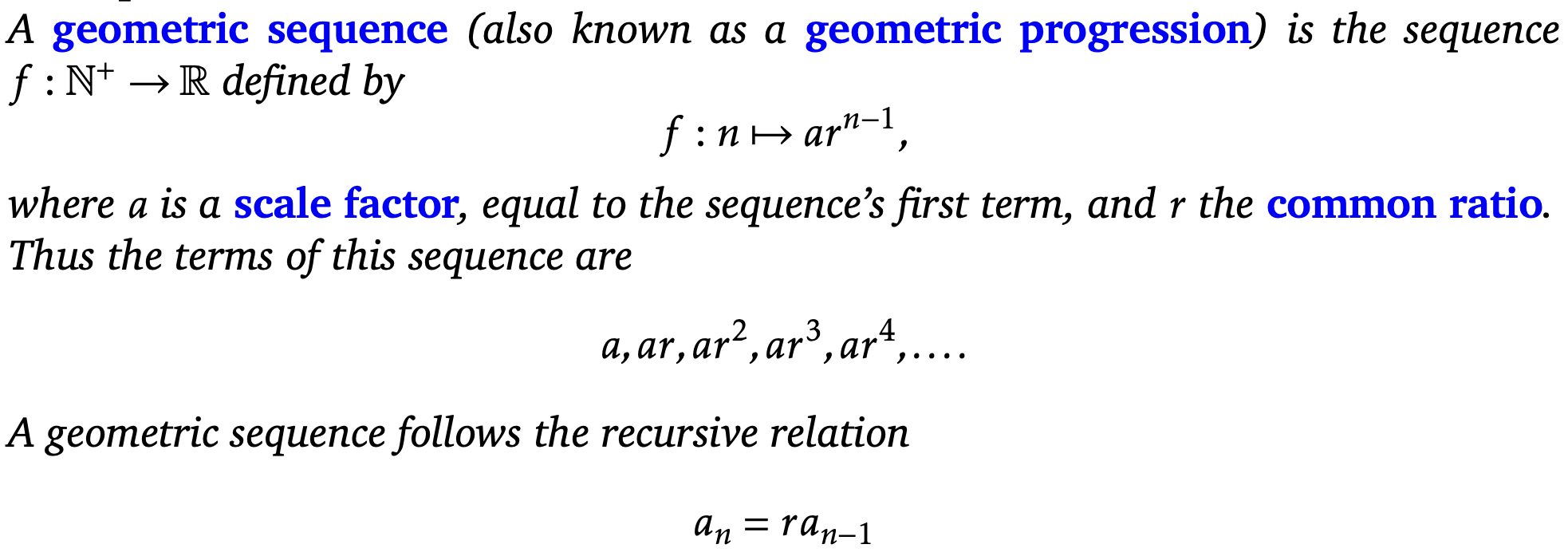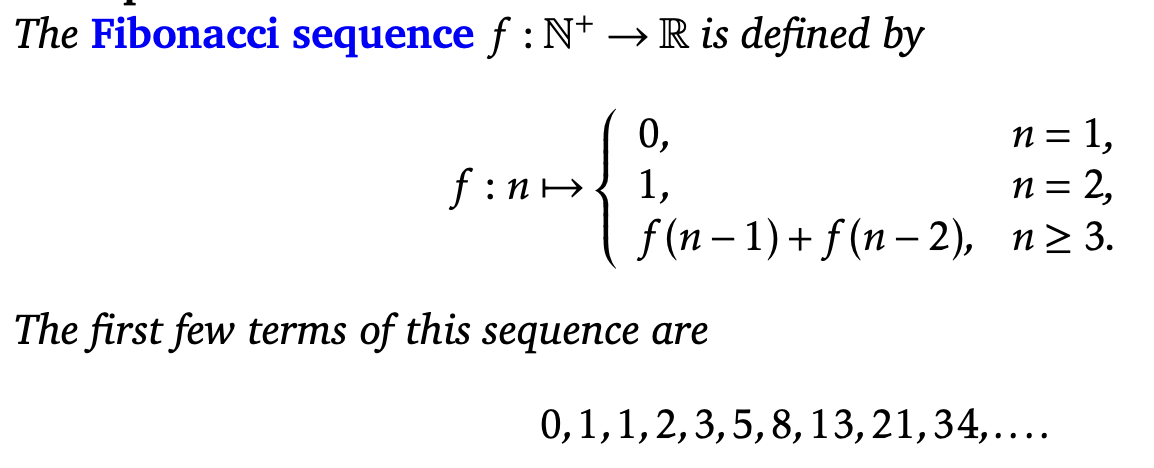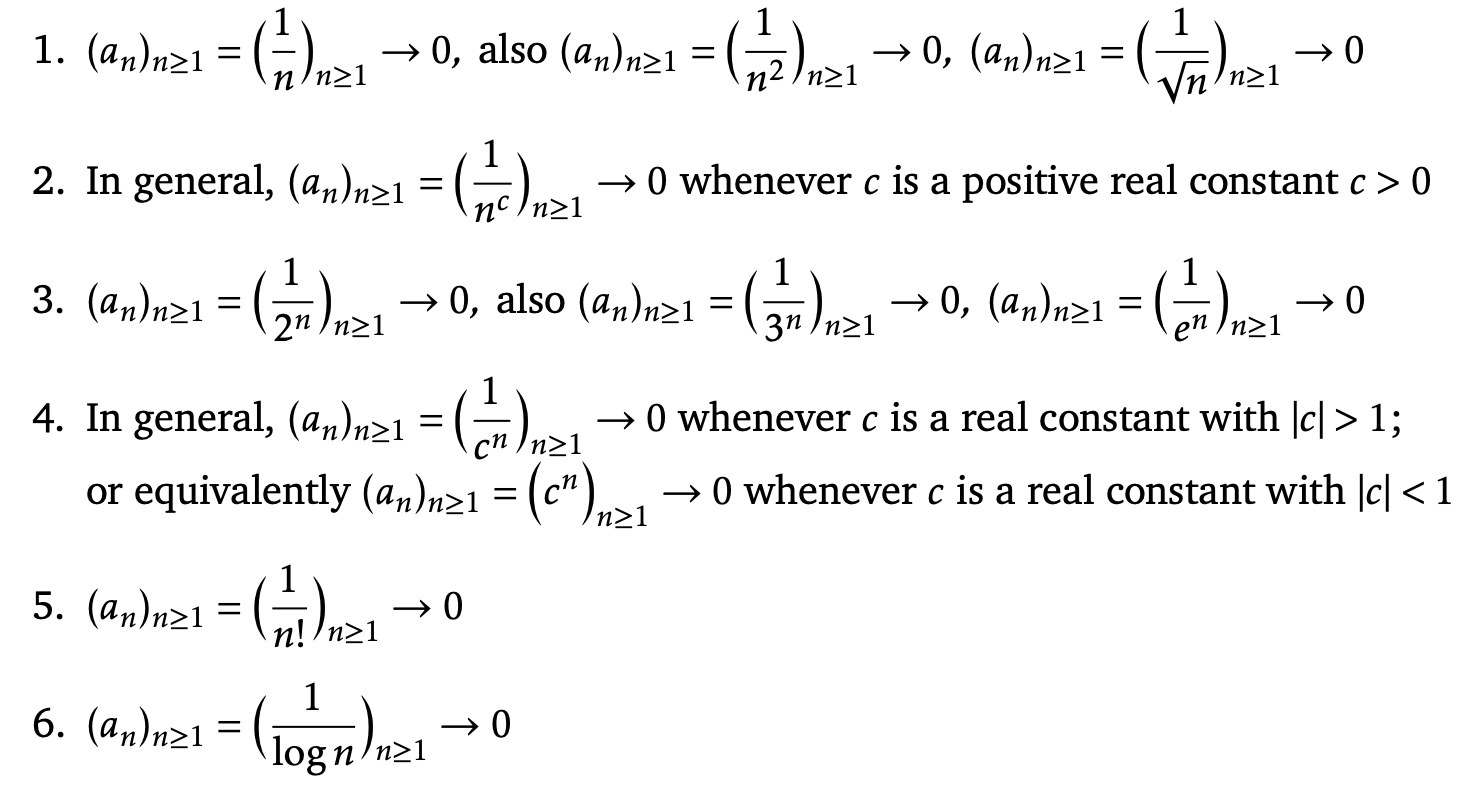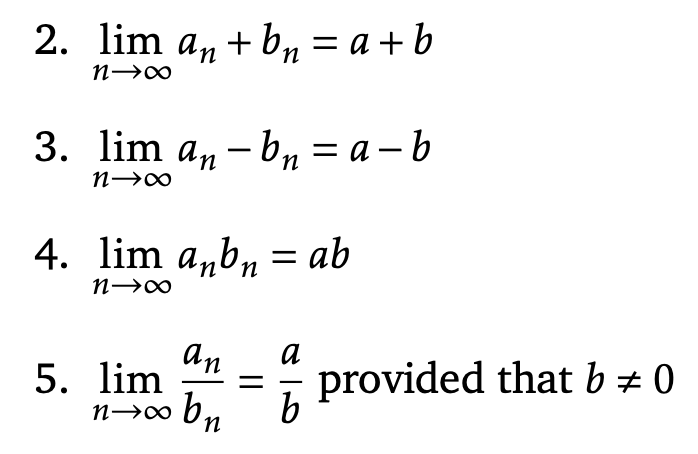Calculus: 5 - Sequences
1/41
There's no tags or description
Looks like no tags are added yet.
Name | Mastery | Learn | Test | Matching | Spaced |
|---|
No study sessions yet.
42 Terms
define a binary relation over sets A and B
a subset of the Cartesian product A × B; that is, it is a set of ordered pairs (a,b) consisting of elements a in A and b in B
define n-ary relation over sets A1,...,An
a subset of the Cartesian product A1×...×An
what are examples of side effects of programmable functions
output text to the console, write a record to a database, send data over the network, etc.
define sequence
A sequence is a function f : N → R that maps natural numbers to real numbers. Often it is convenient to define a sequence as a function f : N+ → R that maps positive natural numbers to real numbers, which is the terminology we adopt.
define terms of sequences
outputs of f(n)
sequence notation
(an)n≥1, where an = f (n)
define arithmetic sequence

sum of an arithmetic sequence
Sn = n/2 ( a1 + an ) .
define geometric sequence

sum of a geometric sequence
Sn = a(1−r^n)/(1−r) if r /= 1
define Fibonacci sequence

definition of an increasing sequence
A sequence (an)n≥1 is increasing if an+1 ≥ an for all n ≥ 1
definition of a decreasing sequence
it is decreasing if an+1 ≤ an for all n ≥ 1.
define monotonic sequence
either increasing or decreasing
define sequence convergence to a limit

define sequence convergence to infinity

define sequence convergence to -infinity

define sequence convergence
The sequence (an)n≥1 converges if it converges either to a real number or to ∞ or to −∞.
define sequence divergence
The sequence (an)n≥1 diverges if it does not converge
define the limit inequality
|an − l| < ε is called the limit inequality and says that the distance from the nth term in the sequence to the limit should be less than ε.
common convergent sequences

combinations of sequences
Given sequences (an)n≥1 and (bn)n≥1 which converge to limits a ∈ R and b ∈ R respectively, and a real constant λ, we have


triangle inequality definition
|a+b|≤|a|+|b|
prove by squaring |a+b| and using algebraic manipulation
If (an)n≥1 converges to a ∈ R, is it bounded?
it is bounded
is limit of a sequence unique?
a sequence (an)n≥1 can only have one limit
define Cauchy sequence
A sequence (an)n≥1 is a Cauchy sequence iff for all ε > 0, there is some N in N such that for all n, m > N we have |an−am| < ε
A subset A ⊂ R is said to be complete if
any Cauchy sequence in A converges to a limit in A
define the sandwich theorem

Define the ratio test for sequences

Define the limit ratio test

Define subsequence

Any subsequence of a convergent sequence converges to…
…the limit of the sequence
define a peak of a sequence
Consider a sequence (an)n≥1. For any m ≥ 1, we say that am is a peak of (an)n≥1 if am ≥ an for all n ≥ m
useful techniques for manipulating absolute values

define upper bound
u is an upper bound of X if x ≤ u for all x ∈X
define lower bound
l is a lower bound of X if l ≤ x for all x ∈ X
define supremum/least upper bound
a least upper bound (supremum, sup(X)) of X is an upper bound s of X such that s ≤ u for all upper bounds u of X
define infimum/greatest lower bound
a greatest lower bound (infimum, inf(X)) of X is a lower bound i of X such that l ≤ i for all lower bounds l of X
a set X is bounded above if
if X has an upper bound
a set X is bounded below if
if X has a lower bound
Axiom of Dedekind-completeness for real numbers
Every nonempty subset X of the real numbers R that is bounded above has a least upper bound
Fundamental theorem of analysis
